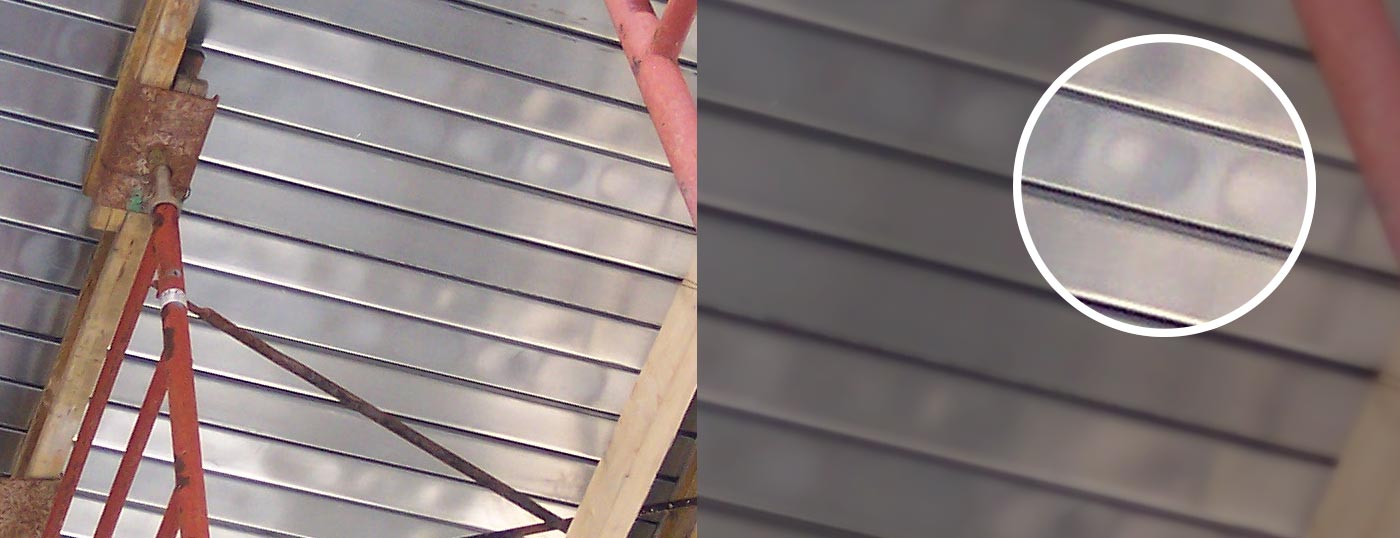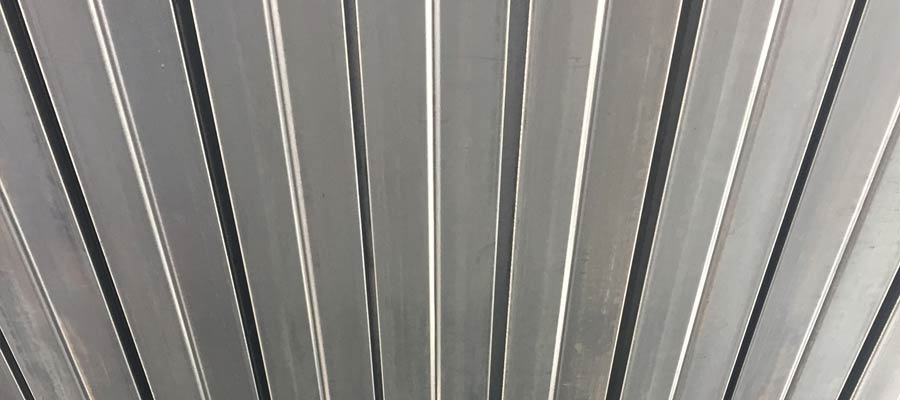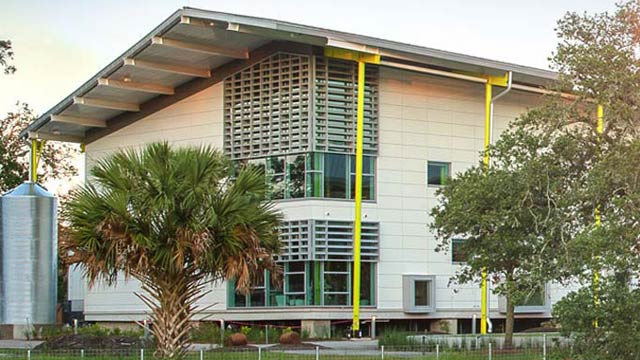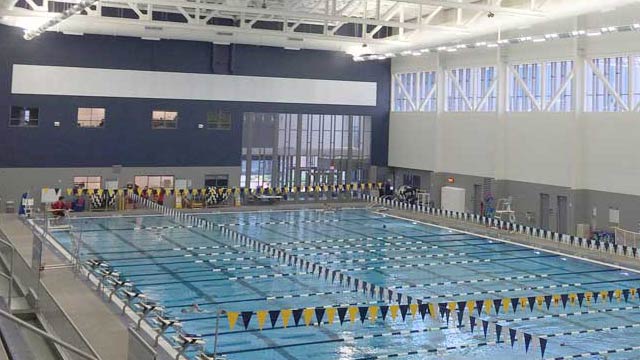
Oil canning is visible waviness in the flat areas of metal roofing and wall panels that can be seen when light hits the metal at just the right angle. The condition—also known as stress wrinkling and elastic buckling—is a construction headache.
The aesthetic appeal of a roof can be ruined when the customarily smooth metal appears warped. This can occur with any type of metal panel, including steel, aluminum, zinc and copper. However, the occurrence and severity of the condition can be lessened through several pre- and post-construction methods or practices.
When metal tries to alleviate differential stresses within itself, oil canning is the result. If metal panels have a high width-to-thickness ratio, it buckles out of plane. This produces the stress wrinkling. A number of factors cause these differential stresses.
Stress wrinkling can occur during coil production because of the pressure used to create metal thin enough to be coiled. The condition becomes greater as the metal’s tensile strength increases. Improper storage and handling of metal also can introduce stress wrinkling.
Forming sheet metal can cause stresses to be introduced to the material. The differential stresses that cause wrinkling can be reduced through adjusting feed rates, designing tools properly and keeping them maintained, and fine-tuning equipment.
During or after installation, if the primary structure moves because of deflection, drifting or other causes, this may induce oil canning. Even the intentional camber designed into rafters and trusses to alleviate deflection under load can cause oil canning.
When roof or wall panels are not installed true to their intended coverage dimensions, oil canning can occur. Improper installation of joints and over-driving of fasteners also can cause it.
Some designers consider stress wrinkling to be unavoidable and may even treat it as a desired effect that accentuates the metal’s natural characteristics. However, there are a number of measures that designers, manufacturers, fabricators and installers can take to reduce the likelihood and degree of the condition. Tension-precision leveling, usage of heavier gauge metal, proper attachment system installation and even the use of low-gloss finishes may help lessen the prominence of buckling.

The introduction of intermediate longitudinal stiffeners can help minimize oil canning and improve the structural effectiveness of the stiffened flange when compressed.
“Our 3.5-inch-deep Versa-Dek® 3.5 LS and 2-inch-deep Versa-Dek® LS ES have small longitudinal stiffeners in the middle of relatively wide bottom flanges that help us to reduce oil canning,” says Vitaliy Degtyarev, design and research engineer for New Millennium Building Systems. “This is true for acoustical, non-acoustical, composite and roof profiles. The stiffeners help us achieve greater section properties in the negative bending when the bottom flange is in compression.”
For more information about this condition and how to avoid it, contact one of our deck specialists.

Dovetail roof deck makes the museum’s signature feature, a skewed, gabled metal roof, possible while helping control acoustics and facilitating a design that allows the natural environment to be part of the experience.

Indoor pools or natatoriums present unique building design challenges: How to address humid, corrosive environments as well as the ambient noise created in these cavernous structures. Steel joists and steel roof deck provide the solution.
Building a better steel experience